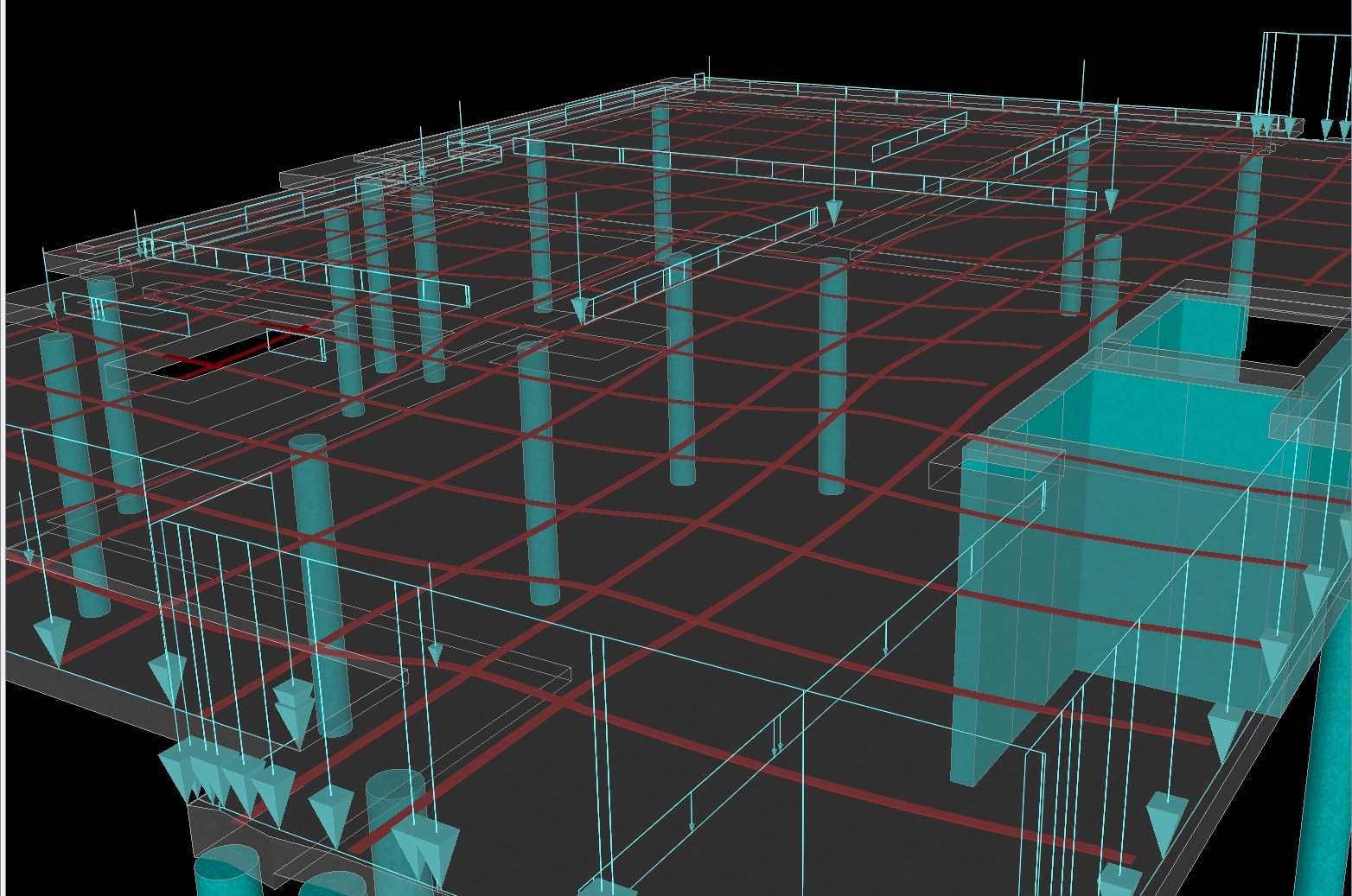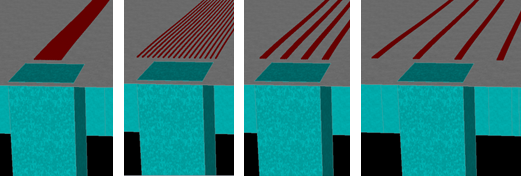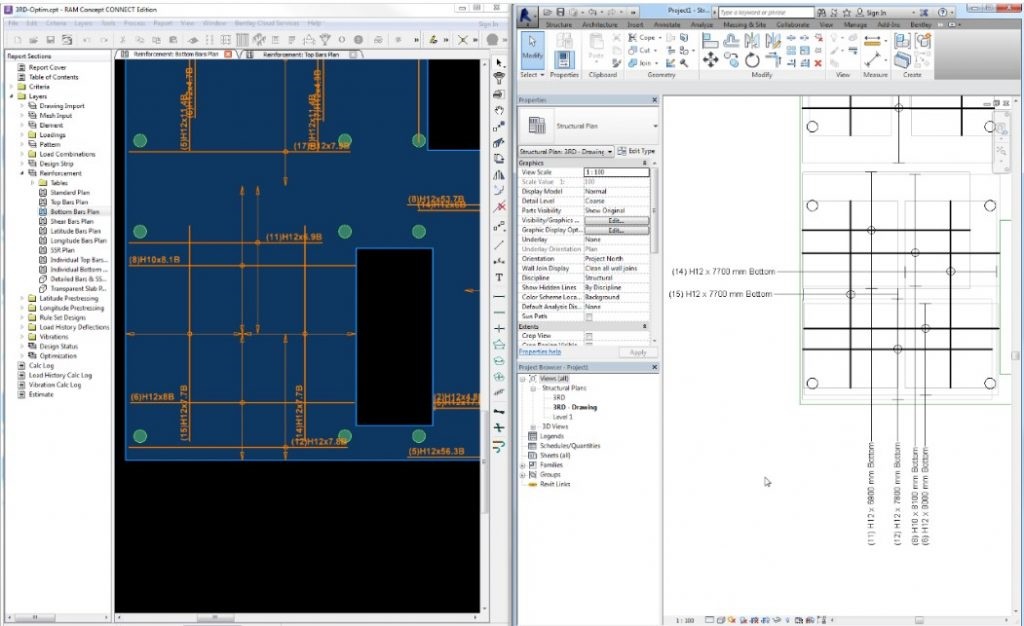Steel and Concrete structures, Automated detailing drawing
RAM Concept CONNECT Edition
โปรแกรม Reinforced Concrete slab และ Post-Tensioned design
![]() RAM Concept CONNECT Edition เป็นโปรแกรมสำหรับการวิเคราะห์และออกแบบโครงสร้าง reinforced และ post-tensioned concrete floors, mats และ rafts
RAM Concept CONNECT Edition เป็นโปรแกรมสำหรับการวิเคราะห์และออกแบบโครงสร้าง reinforced และ post-tensioned concrete floors, mats และ rafts
RAM Concept CONNECT Edition สามารถออกแบบ floor system ได้หลากหลาย ได้แก่ post-tensioned, reinforced concrete และ hybrid systems elevated slabs, และ mat/raft foundations, one-way slabs, two-way slabs, beams และ joist systems

![]() RAM Concept CONNECT Edition ช่วยให้วิศวกรออกแบบ post-tensioned และ reinforced concrete slabs โดยการใช้โมเดล finite element ของแผ่นพื้นทั้งหมด
RAM Concept CONNECT Edition ช่วยให้วิศวกรออกแบบ post-tensioned และ reinforced concrete slabs โดยการใช้โมเดล finite element ของแผ่นพื้นทั้งหมด
RAM Concept CONNECT Edition สามารถคาดการณ์พฤติกรรมความยืดหยุ่นของแผ่นคอนกรีตได้แม่นยำกว่าแบบ frame models

![]() RAM Concept - features
RAM Concept - features
- การสร้างโมเดลพื้นให้เป็น physical objects ได้แก่ slabs, beams, walls, columns, openings, penetrations และอื่นๆ พร้อมตัวเลือกในการติดตามบน CAD background
- ความสามารถในการออกแบบที่ละเอียด รวมถึงการพิจารณาได้ทั้งระยะสั้นและระยะยาว, service and strength criteria, การออกแบบแรงเฉือนแบบเจาะ, การสั่นสะเทือนเนื่องจากการเดิน และการคำนวณการโก่งตัวขั้นสูงโดยใช้ load history
- การสร้าง Tendon อัตโนมัติ

- การสร้างไฟล์ CAD จาก inforcing หรือ post-tensioning plans

- user interface แบบเรียงตามเลเยอร์ เช่นเดียวกับ CAD drawing
- เครื่องมือการจัดการคำเตือนและข้อผิดพลาด เพื่อระบุ ค้นหา แก้ไขคำเตือน และข้อผิดพลาด

Warnings and errors management tool is available to be set.
- รวม RAM Concept models เข้ากับ RAM Structural System หรือ STAAD.Pro เพื่อวิเคราะห์และออกแบบส่วนโครงสร้างสำหรับการลบ gravity load แบบเต็มและ systematic lateral loads
- การทำงานร่วมกันกับ Revit.

Capabilities
- วิเคราะห์ gravity และ lateral load
- ออกแบบและวิเคราะห์ finite elements ได้อย่างรวดเร็วเพื่อลดและขจัดเวลาที่ใช้ในการรอผลลัพธ์
- ออกแบบรากฐานให้ได้มาตรฐานสากล
- ออกแบบ post-tensioned และ conventional systems
- แชร์ structural models
วิเคราะห์ gravity และ lateral load
ออกแบบและวิเคราะห์โครงสร้างที่ทั่วไปหรือซับซ้อนสำหรับ loading conditions ที่หลากหลาย รวมถึงสภาวะที่เกิดจากแรงโน้มถ่วง เช่น การรับน้ำหนัก dead load และ live load เช่น skip condition และ tilt-up wall ร่วมกับการรับน้ำหนักด้านข้าง เช่น แรงลมและแรงแผ่นดินไหว
ออกแบบและวิเคราะห์ finite elements ได้อย่างรวดเร็วเพื่อลดและขจัดเวลาที่ใช้ในการรอผลลัพธ์
วิเคราะห์อาคาร ออกแบบโครงสร้างทั้งหมดอย่างแม่นยำและมีประสิทธิภาพโดยใช้การวิเคราะห์ finite element ที่ทันสมัย เพื่อลดและขจัดเวลาในการรอผลลัพธ์ให้รวดเร็วยิ่งขึ้น
ออกแบบรากฐานให้ได้มาตรฐานสากล
ออกแบบฐานรากได้หลากหลาย ตั้งแต่ฐานรากทั่วไปจนถึงฐานรากที่ซับซ้อน และ machinery pads เฉพาะทาง เติมเต็มการออกแบบของคุณด้วยการรองรับมาตรฐานสากลอย่างกว้างขวาง
ออกแบบ post-tensioned และ conventional systems
ออกแบบแผ่นพื้นคอนกรีตยกระดับแบบมีหรือไม่มี post-tensioning พิจารณาทุกแง่มุมที่สำคัญของการออกแบบแผ่นคอนกรีต รวมถึง service, ductility และ strength limit states, code-prescribed requirements, long-term deflections, punching shear และ walking vibration
แชร์ structural models
แชร์ geometry ของโมเดลโครงสร้างและผลลัพธ์การออกแบบจากโปรแกรมหนึ่งไปยังอีกโปรแกรมหนึ่ง และซิงโครไนซ์เมื่อมีการเปลี่ยนแปลง แชร์โมเดลโครงสร้าง, drawing และข้อมูลกับทั้งทีมเพื่อตรวจสอบอย่างรวดเร็ว








